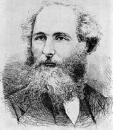|
|

Home
Contact
Info
Course
Info
Calendar
Homework
Lecture
Notes
|
|
|
|
Physics 415: Electromagnetic Theory I
Prof. S. Teitel stte@pas.rochester.edu ----- Fall 2002
Midterm Exam
Please show all you work. Explain your steps to maximize your chances for partial credit. Put a circle around your final answer.
Problems 1, 2, and 3 are meant as "short answer" type problems. Once you see what is needed, you should not need to do a very lengthy calculation to arrive at the answer. Problem 4 is a more involved calculation. Note that Problem 4 is worth twice the points as the other problems.
- Problem 1 [20 points total]
a) Consider a point charge q in front of two infinite grounded planes at right angles to each other, as shown in the figure below. The intersection of the planes coincides with the z axis, and the position of the charge is given by the coordinates r=(xo, yo, 0). What is the force F on the charge q?

- Problem 2 [20 points total]
In each of the following examples, an electric field E is produced. In each case, this field will decay as E ~ 1/rn, for large r. Determine the value of n for each case, carefully explaining the reason for your answer.
a) a spherical shell of radius R, centered on the origin, with a surface charge density of  ( ( ) = ) =  ocos3( ocos3( ). Here ). Here  o is a constant, and o is a constant, and  is the usual spherical angular coordinate. is the usual spherical angular coordinate.
b) a disk of radius R in the xy plane at z=0, centered on the origin, with surface charge density  (r) = Csin(2 (r) = Csin(2 r/R). Here r is the radial distance on the disk. r/R). Here r is the radial distance on the disk.
c) four point charges located as follows:
| +q at r=(xo,yo,zo) |
-q at r=(-xo,yo,zo) |
| +q at r=(-xo,-yo,zo) |
-q at r=(xo,-yo,zo) |
- Problem 3 [20 points total]
a) A circular wire loop of radius R, carrying a current I, is bent at right angles, as shown below. What is the magnetic field B at a point r = r(ex+ey), where r>>R? (ex and ey are the unit vectors in x and y directions)

b) Two circular wire loops, each of radius R, are centered about the origin and lying in the xy plane. One loop is at height z=+a and has current I circulating clockwise. The other loop is at height z=-a and has a current I circulating counter-clockwise. For large distances r>>R the magnetic field B will decay, to leading order, proportional to B ~ 1/rn. What will be the value of n? You must explain your answer.
- Problem 4 [40 points total]
Consider a spherical shell of radius R, with a fixed surface charge density given by  ( ( ) = ) =  ocos2( ocos2( ). Here ). Here  o is a constant, and o is a constant, and  is the usual spherical angular coordinate. is the usual spherical angular coordinate.
Find the electrostatic potential  (r) both inside and outside the shell. (r) both inside and outside the shell.
|

 (
( ) =
) =  r/R). Here r is the radial distance on the disk.
r/R). Here r is the radial distance on the disk.
 (r) both inside and outside the shell.
(r) both inside and outside the shell.